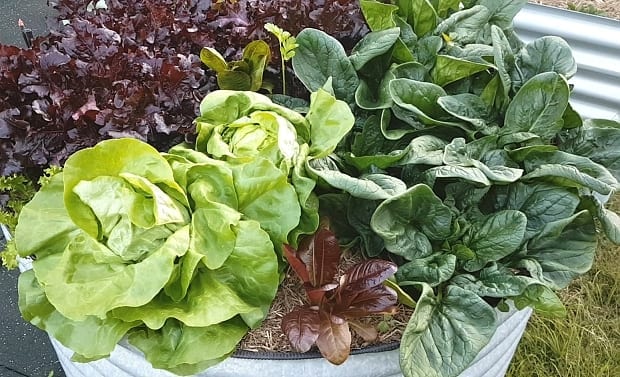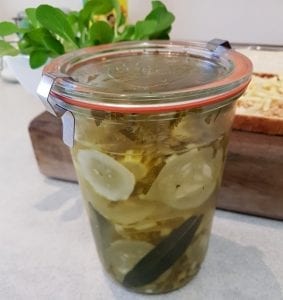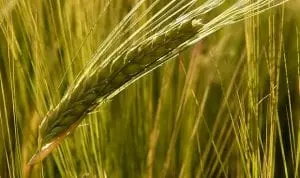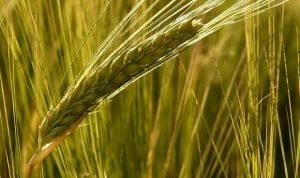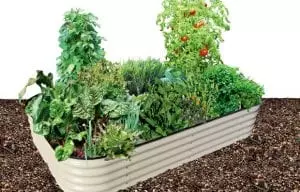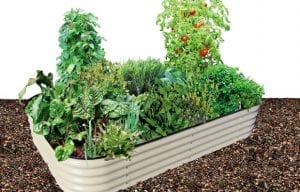Place a teaspoon of soil in the palm of your hand. In that teaspoon of soil, there could be as many as 3000 species of bacteria, 200 species of fungi and 20 000 algae. In fact, there are more organisms in a handful of soil than there are people on earth…but most of them can only be seen through a microscope. Together with macrofauna (such as visible insects) and plant roots, they form the soil biota.
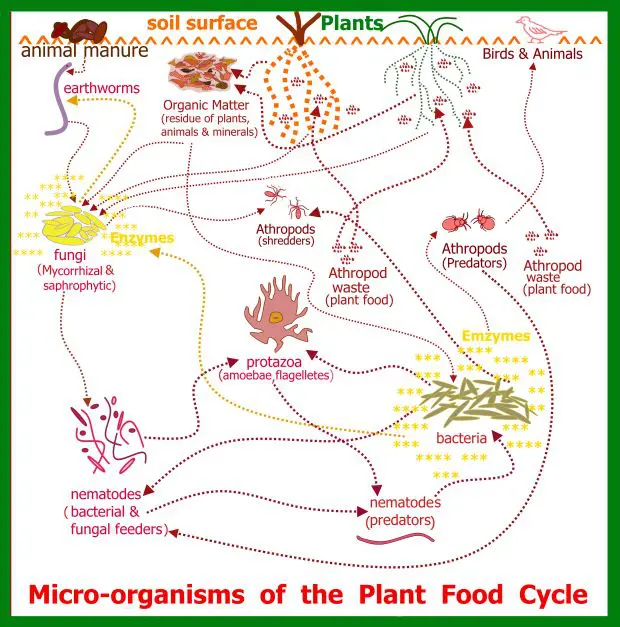
This universe of micro-organisms in the soil feeds our plants and keeps our soil rich and dynamic. Each component of the cycle shown above plays an important role in soil structure and vitality, so if any part of this intricate web is broken, garden and soil condition will suffer.
This is why your hear the term no-dig gardening. Thanks to Charles Dowding, the pioneer of this self-explanatory gardening method since 1981, more and more people now know the benefits of no-dig vegetable gardening…not the least of which is less work for the gardener. Less digging, less bending and less work sounds great, doesn’t it? But does it give the same results? And why does it work?? A detailed look at the plant food cycle explains it.
HOW THE PLANT FOOD CYCLE WORKS
- Bacteria (single celled microbes) number in the hundreds of thousands, and play a vital role in decomposing organic matter. Despite their active role they can’t travel through the soil and are food for predators. When that happens, the nutrients excreted by those predators become available to plants.
- Fungi (eukaryotic organisms), unlike bacteria, can move through soil by making mycelium threads which can be many metres long. These threads help aerate the soil and move nutrients around. This is why tilling or digging the soil may not be a good idea. Plant roots exude sugars that attract mycorrhizal fungi to harvest and unlock minerals, especially phosphorus.
- Protozoa, includes amoebae, ciliates and flagellates, live off and work in conjunction with bacteria. Protozoa are responsible for creating most of a plants nitrogen.
- Nematodes comes in two forms- beneficial and predatory. They are a type of roundworm and are prolific. They consume everything lower than them in the food chain, plus predating on some above such as slugs, snails and some plant roots. Nematodes play a large role in mineralising nitrogen. To find out more about soil minerals are how they are interlinked, read our article ‘Soil minerals: what are they and how do I get the balance right?’
- Arthropods (invertebrates with exoskeletons & jointed legs) take many forms. From mites to spiders, beetles, springtails, millipedes and slaters, arthropods distribute nutrients throughout the soil.
- Earthworms play a crucial part in breaking up compacted soils and increasing its water retention ability. Their digestive enzymes work in such a way that the castings (poop) they leave in their wake can have 50% more organic matter and nutrients than the surrounding soil.
- Gastropods are shelled invertebrates like slugs and snails, which eat large amounts of vegetation and soil-borne organic matter. They convert this organic matter into simple sugars and atoms which form a nutrient-dense plant food. Their excreta looks like little worm-shaped muddy lumps holding soil particles together.
- Plant Food The final stage of the plant food cycle is when plants encourage fungi and bacteria into their root zones by injecting the surrounding soil with a portion of the sugars they produced during photosynthesis. Up to 40% of these sugars are used in this way, until enough fungi and bacteria are present that they are able to mine the surrounding soil for their own food and create a synergistic relationship with the plant roots. Once they are established, the tiny spores of fungi live inside the roots and each grow a thread that runs from the root out into the soil. This is why when roots are disturbed, most plants wilt immediately.

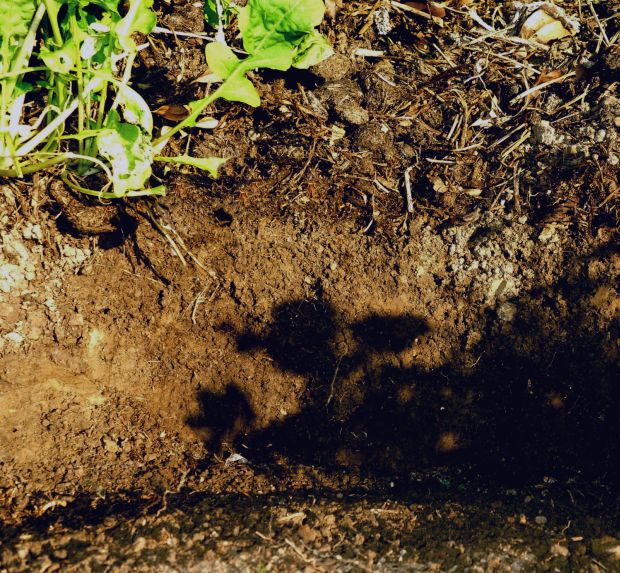
This is why many soil biologists now recommend minimal soil disturbance; in other words, no-dig gardening. But there are even more advantages to the no-dig method, both to the garden & the gardener.
- Tilling or ‘digging through’ the soil breaks the delicate thread structures of the mycelium that wend their way several inches from each root. These threads form a network throughout the soil that is a vital part of the soil food network.
2. Provision of nutrients to the plants is delayed, because tilling disturbs the whole structure of the soil, breaking those threads so the mycorrhizal fungi have to rebuild them. This can also makes some soils ‘tighten up’, as the enzymes exuded by the bacteria and fungi help to keep the soil particles open and receptive to moisture.
3. Less time and effort spent in the garden. No dig gardening means no tilling, no digging-not even pulling out plant roots- and less weeding. Weeds are less likely to appear as existing weed seed is not disturbed and prompted to grow. Less watering is needed too, as there is no ‘shatter zone’ caused by over-cultivation.
4. Warmth retention is improved in colder climates: deep-level heat is available to rise to the surface when it has been left undisturbed.
5. As digging & tilling expose soil organisms to the air, they naturally dry out, losing carbon and nitrogen. Cultivation causes carbon to oxidate and convert to CO2 which is released into the atmosphere.
Now imagine how amazing a biota is created when you use the hugelkultur method. Hugelkultur is when you mound organic matter such as logs, branches, leaves, grass clippings, straw, cardboard, newspaper, manure, compost, etc. into the base of a garden and grow your veggies in a soil layer on top. It can be done in the ground, in raised garden beds or in containers. Watch our video below to see how it works in a raised garden bed.
The advantages of a hugelkultur bed are many, including:
*The wood at the base of the bed provides a source of long-term nutrients for the plants. As the wood breaks down it also generates heat, which should extend the growing season.
*Soil aeration increases as those branches and logs break down… meaning the bed will be no-dig, long term.
*The logs and branches act like a sponge for moisture. Rainwater is stored and then released during drier times.
Effectively, hugelkultur creates an enormous resource of of habitat and nutrients for your plants to thrive. Together with no-dig gardening, you’re on your way to happier, healthier vegetables that give you more food, faster….it’s a win-win!

